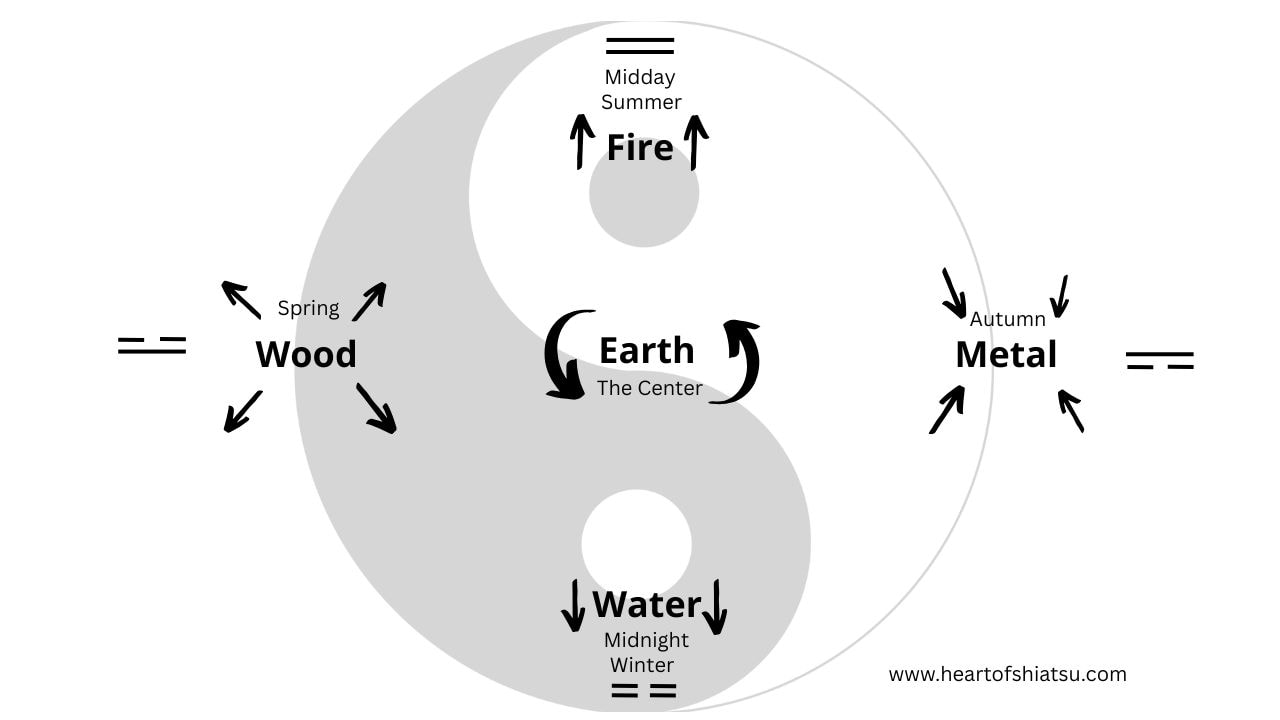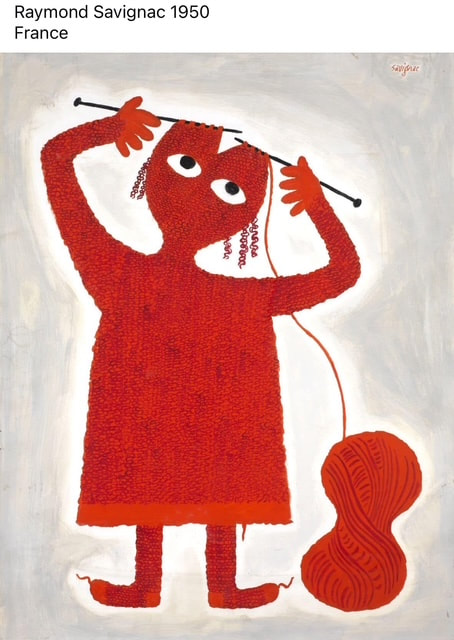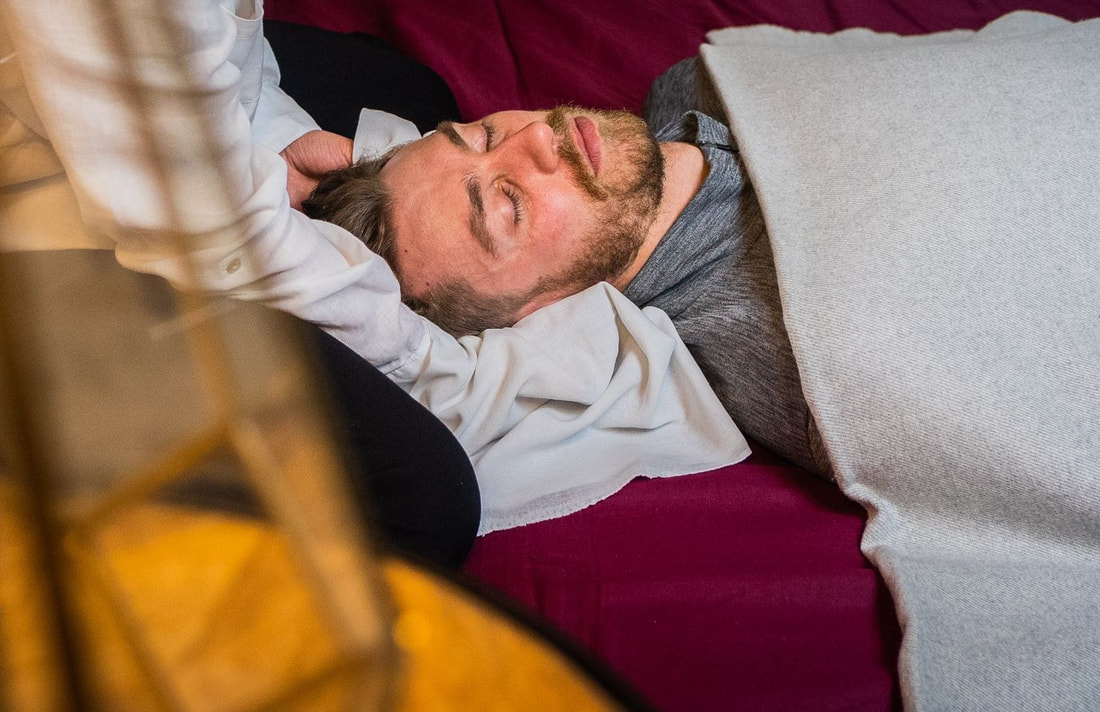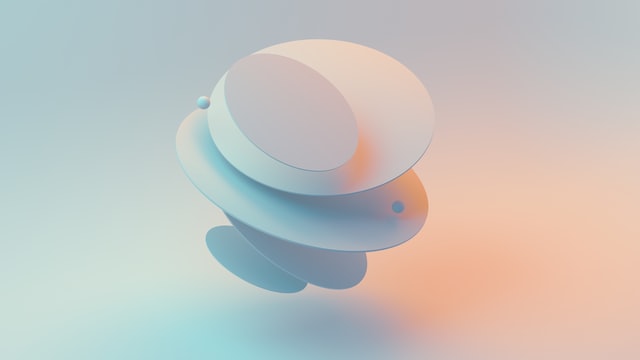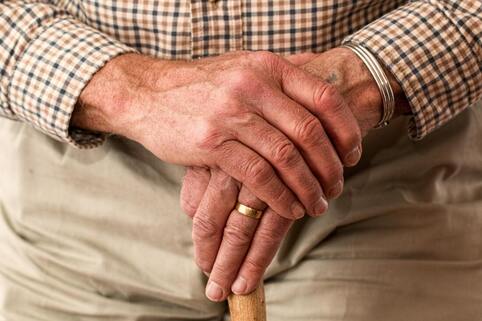|
True happiness and a sense of fulfillment begin with balance. Our emotional and mental well-being are deeply rooted in the health of our bodies, and this starts with maintaining a natural state of equilibrium.
In Eastern medicine and philosophy, life is understood as a dynamic interplay between polarities—most famously expressed as yin and yang. These opposing yet complementary forces manifest throughout nature and our bodies. When we think of polarity in terms of direction, we begin to see how balance governs our experience:
If we take these directions metaphorically, they can also represent embodied aspects of our lives. We must find balance between the grounded strength of our legs and feet and the intuitive insight of our heart and mind. Being present in daily life must coexist with nurturing our spiritual side—whatever that may mean to each of us. Standing firmly on our own two feet connects us to a larger whole: the understanding that we are part of the universe, and the universe is part of us. In and out can represent internal and external awareness, or the direction of our energy. Both can be sources of nourishment or depletion, depending on our personal constitution, habits, and levels of stress. Left and right suggest physical symmetry, but also offer insight from Chinese philosophy: the left representing structure and predictability; the right symbolizing flow, spontaneity, and trust in life’s unfolding. Front, back, and center provide another rich metaphor. In the dimension of time, they align with future, past, and the present moment. In bodily and life experience, the front reflects our day-to-day functioning, while the back holds deeper themes—life, death, ancestry, and the stories we carry. The center is where these planes meet; it is where we find balance, and where we choose—consciously or not—how and when to engage with them. Are our actions and choices in harmony with life’s natural cycles? In holistic medicine, we begin by recognizing these polarities and honestly observing where we are at any given moment. From there, we explore each dimension of movement and experience. The goal is integration—bringing these elements into greater harmony and balance. And this is not a final destination. It’s an ongoing journey of awareness, a process of continually returning to our center with greater ease and clarity. Shiatsu is not a massage, nor is it psychotherapy. It is a holistic practice that uses the body as a gateway to connect with and support the whole person.
Many of my clients experience mind-body syndrome, where physical symptoms stem from suppressed emotions or unresolved trauma. This can manifest as headaches, migraines, frozen shoulder, digestive issues, chronic pain, chronic fatigue syndrome, anxiety, depression, or insomnia. These conditions are complex, with both physiological and emotional components, requiring a holistic approach to healing. How Does Shiatsu Help? A key part of treatment is retraining the nervous system—offering the body new ways to regulate stress and restore balance. 🔹 On a physical level, we work with tension, bringing awareness to how the body automatically responds to stress. Muscle contraction and restricted blood flow create a feedback loop, signaling a state of threat. Depending on our resources, this may show up as pain, fatigue, or anxiety. 🔹 On an emotional level, we address the secondary loop—the way we react to our symptoms and the behavioral changes that follow. Why I Love the Holistic Approach of Eastern Medicine? Eastern Medicine provides a map for understanding patterns of tension, movement, and stagnation—not just in the muscles, but in the circulation of blood and fluids, the physical structures, and the body’s rhythm over time. This wisdom, refined over more than 3,000 years, offers a deep, empirical understanding of how our systems function in harmony. The core principle? Integration. Healing is about restoring balance and supporting the body’s natural flow, rather than isolating a symptom and simply trying to make it disappear. That said, I deeply respect modern medicine and always encourage my clients to have a health check first. Shiatsu is not about replacing conventional care—it’s about complementing it, offering a more complete picture of well-being. If this resonates with you, I’d love to support you on your journey to balance and vitality. In medicine, a holistic approach means addressing the whole person rather than just isolated symptoms or body parts. We don’t treat only the physical, emotional, or mental aspects separately—life unfolds in its wholeness. When it comes to health, the mind, body, emotions, and spirit are interconnected. Each level of expression is linked to the others, and any one of them can serve as a gateway to restoring balance in the entire system. A Practical Example Imagine a client comes to me and says, "I feel stuck." Even before she speaks further, her body already communicates. Her movements are rigid, her posture slightly closed. Her diaphragm is tight, and her breathing is shallow. This could indicate many things. Rather than rushing to interpret, I aim to create an embodied connection to the word she has chosen--stuck. I invite her to gently place her hands and awareness on her heart center and abdomen, her Hara. I encourage her to take a few natural breaths, allowing her mind and emotions to settle into the space. There is nothing to achieve—just a moment to arrive. Then I ask, "What kind of stuck is this?" We explore together and discover that events in her life haven’t unfolded as she had hoped. I ask, "And is there anything else about being stuck?" She pauses, then responds, "I feel heavy. I don’t feel at ease to move. I don’t have dreams anymore…" We allow these words to settle. The space between us holds them. Then I ask, "And to feel at ease to move, what would you like to have happen?" ... As our session unfolds, we navigate insights and metaphors, listening to the story her body tells. When we reach a point where Shiatsu treatment can begin, I hold these discoveries in the quality of my touch. A deeper connection emerges, revealing the hidden treasures within her physical structure:
Our work will continue—building trust, creating a sense of inner safety, and reconnecting with her deeper resources. These become a safe harbor—a place of rest, trust in life, and the ability to embrace uncertainty with curiosity rather than fear. After the session, we discuss small lifestyle adjustments:
This is a sample case and does not represent any specific client. Every session is strictly confidential. Shiatsu and the perception of your body: the senses of touch, of life, of movement, of balance4/17/2022
The Shiatsu session creates a space and time for you to reconnect with yourself. Through all our life we develop the habit to be busy all the time, planning, doing, chasing goals, fulfilling requirements and expectations, mostly living in our heads. This way of living creates more and more alienation and separation. We are our bodies and the experience of life is directly connected with our sensations. The sensory perception also forms the basis of a richer and more satisfying relationship with ourself, our surroundings, and the people around us. There is a deep connection between sensory perception, and health and vitality. Our vitality increases if we expand and develop our perceptibility. At the same time, the healthier and more vital we are, the more intensive and perceptive our observations become. Shiatsu is a physical holistic therapy. The Shiatsu session is a full body treatment using deep and relaxing, “listening” touch. During the session the quality of touch is adjusted according the client’s current state. On a physical level Shiatsu works with your senses which relate to the perception of your body: the senses of touch, of life, of movement, of balance. The sense of touch The sense of touch, or tactile sense, is made up of a very fine network of receptors in our skin, forming our body’s largest sensory system. The skin is our body’s shield, and touch makes us aware of our boundaries. Our tactile sense delineates our body. It indicates where one ends and something else begins. Without the sense of touch, one would not feel this boundary. The sense of life The sense of life is the internal sense of our organs and internal life processes. In the fast-paced everyday life, we don’t spend time to listen to our body. We do not sense anything as long as your life processes are all following their normal, harmonious course. We do not register the life sense until one of the life processes is disturbed, or when we are ill. We do not perceive our organs or life sense unless something is wrong. We forget to appreciate the simplicity of just being alive. With regularly receiving Shiatsu we start developing our awareness about our organs and inner processes. The sensitivity about our personal wellbeing increases. We recognize much faster if we are in a zone of imbalance. We develop our inner focus and “space” of tranquility. By becoming sensitive to our life sense, we can expand it to make external observations, by using it in combination with other senses and empathizing. We become aware of the health, vitality levels and illness in other people and organisms. The sense of movement or muscle sense And last but not least Shiatsu supports developing our sense of movement or muscle sense. It enables us to perceive our body’s movements and posture. Increased body awareness not only helps us to perceive our movements, but also to be aware of the exact position of our limbs and all the other moving parts of the body. The muscle sense is situated in spindle-shaped receptors in the muscles, which measure the degree of tension in the muscle fibers. There are similar receptors in the tendons. The bending and stretching of the limbs are perceived by receptors in the joint tendons and in the surrounding tissue. The contrast between tension and relaxation supports us to reach a state of optimum functioning and recovery. Photo: Tom Roper In April and May 2021, I continued my explorations and development as a Clean Language facilitator with the next advanced course with Nick Pole and an amazing group of mind-body practitioners. The final course work was a mini-project. I chosen the topic “Being in your center is like what?”. The conclusions are based on 10 sessions. You can see the whole project here.
The background story As a Shiatsu student during my training, I practiced for extended hours developing my Ki and Hara awareness. I had a chance to work with martial art masters and to compare their work with mine, their state of being in their Hara and my “lack of being” there. I spent a year “trying to find my center”. I believed that there must be something really wrong with me. I donated my high heels and switched to trainers and barefoot walking to improve my connection with the Earth. Now, I consider this personal story hilarious, but back then I was very serious. I meditated on being in my center and every time my awareness brought me to different states of consciousness, Ki patterns of movement and connections to the outside world, and not only to the area between the pelvic floor lower back and the solar plexus. If I have to translate in not so clean manner the topic of the research, it will be something like “in searching of my center with the help of the others”. The topic of exploration “Being in your center is like what?” I have chosen this topic with the idea to discover more about: The experience of the center for the people who have been trained in the oriental traditions to develop awareness about their center. The experience of the center for the people who are not familiar with that concept. The similarities in the perception, the embodied felt-sense for practitioners with extended practice (20+ years) related with mindfulness and Ki work? If there is a difference of the perception of the center in the presence of different facilitators? If there is a difference of the perception of the center without a facilitator, and eventually what kind of difference is that? Staying open for unexpected discoveries. Clean Usage of the Language The word Center is a tricky word. It could be a dot in the middle of a circle. It could be the midpoint, in a continuum. It could be a place, a feeling, a state of mind, physical center, center of gravity. It could be pretty much anything. It’s a point for relation. I used intentionally the word center instead of Hara, to avoid the mental constructs which are developed with training, to create and to allow a freedom and space for a felt-sense. My personal observations were that using the “Tethering post” (Tamsin Hartley) approach for this particular project in a way restricted the ultimate freedom, by leading the focus in particular directions. My personal understanding Being in our physical center is a matter of mechanics and structure of the body, determined by the physical laws on the planet Earth, which have been discovered so far. Beyond that we work with something that is always there, our awareness about who we are, what we are, and how does it feel to Be. There are different aspects of us. We expand the range of perception, but also, we are our focus of attention. In our interaction with the others, with the outside world, we create a potential for expanding our awareness to areas we don’t know that exist, but to be able to explore this potential we need to let go of any preconceptions. Conclusion Being in our center is a unique sense of our being, how we perceive ourself at this very moment of time. It is affected by our attention, training, mental constructs, and maybe is defined by parameters outside our understanding of time-space. The perception is influenced by factors like: Different level of resonance with another human being how ready are we for not knowing, to welcome openness and avoid any expectations. If I have to summarize the results, the felt-sense of being in ones center could be:
There are reemerging insights during the different sessions and that require more detailed and further investigation. The emerging associations and states of experience involved sense of relaxation and ease, physicality, lack of sound, feeling of expansion from the center to the periphery and feeling of movement. Increased awareness of the body sensations and need for Ki transformations in the energetic system. My personal experience is that there is a difference in the self-perception, and one possible explanation is the work with different facilitators. My favorite surprise was the session which showed me that the awareness about ourselves, not necessary is related with the time, spent on practices, or with the age, since this was the youngest (20 years old) and unexperienced participant. In another session the connection with the center created space for self-healing, recognition of the reserves and finding a way for restructuring of the Ki movement in the body-mind system. The experiment with Clean Language questions in meditative state led me to the idea that it is possible to develop a technique, that supports the person to bring their attention to their center, inner resources and reduce the stress levels. If you are curious to learn more about how the Clean Language approach could support you just contact me and we will organize a free 30 min session. Photo credit: Sebastian Svenson In the beginning I came across the opportunity to work in care homes by pure luck. I lived with my family for three years in London, in a new-build residential village where nobody knew anybody: lots of busy people who were mostly expats. The concierge team was the only point of contact. In June ‘19 I moved to Kent and I faced a completely new reality. Most of my neighbors here are over 60 years old. They really wanted to get to know me and my family, and the community spirit was strong.
Three days after we moved in, we received a welcome card. Two days after that Michael (72), who lives on my street, came to say hello and invited me to volunteer in regular events at different care homes in our area. These are musical gigs for the residents. We sing all kinds of songs with them, from war songs to Christian songs. The repertoire includes Cliff Richard, Elvis Presley, The Beatles and many more completely unknown to me. My main role is to make sure the correct video comes up for each song on the TV screen. My first gig was in September ‘19 in a big residential home, managed by Bupa (a private health insurance company) with 120 residents, some of them in different stages of dementia. After the gig I went to see the Activities Manager and ask if she would be interested in organizing a Shiatsu taster session for the staff and the residents. She said yes, and this was the beginning of my journey. My experience is based on six months of work with care homes and here are my ‘lessons learned’. I hope my story will inspire some of you to introduce Shiatsu to the elderly people in the care homes near to you. Lessons learned I will divide them into three categories: • Marketing and research • Taster sessions - working with the Activities Manager • Shiatsu challenges and treatments Marketing and research I used a classical marketing approach. First, I prepared an Excel spreadsheet listing all the care homes near me. I used https://www.carehome.co.uk/ as a database. It turned out that there are 18 of them. The next step was to send an e-mail to each one and try to organize a meeting. This communication channel didn’t work. I expected a better response and was disappointed, but in Sales you keep trying until you manage to book a meeting with the key decision maker. So next I divided the list of care homes into four groups, according to location, and over four days I visited each of them with a small pack of presentation materials. My first surprise was that most of the care homes are like fortresses. The first point of contact is the receptionist. Some of them are extremely well trained to keep you away from the Care Home Manager and the Activities Manager. After the first few meetings it was clear that I would have to offer free taster sessions if I wanted the Activities Manager to present my services to her/his boss. I had to be flexible and to adjust my offer according to the needs of the particular home, the style of work of each Activities Manager, and their budget. Each care home where I managed to organize a taster session has their own politics and requirements for outside ‘vendors’. It is helpful to have proof of the Disclosure and Barring Service (DBS) check and other papers (see below for a full list). Taster sessions I offered three different types of taster session. My very first attempt was with a massage chair. It was a struggle for me and for my clients. Most of them were over 80 years old and I wasn’t aware how stiff the human body could be. The real problem is the sitting down and standing up from the massage chair. It requires the help of the staff and in some way is disrespectful to the needs of the elderly people. My oldest client, a 97year old lady, was so tiny that the design of the chair was simply not suitable for her body. Her face was at the level of the chest support and I had to use pillows to support her. After adjustments she managed to relax during the session, but unfortunately the adventure wasn’t over. It took two carers, and me holding the massage chair, to try and find the best way to help her stand up. The second type of taster session lasts about 2 hours (approximately 15 minutes per person) and includes arms, back and head treatment for any residents who are curious to try it out. The treatments are usually in a quiet room, with the resident sitting in an armchair surrounded by staff and other residents. It is not the best setting for a Shiatsu session, but the receiver does become aware of the quality of touch, and what kind of support they could receive. The third type of taster session is a 20-25 mins full body session given in the resident’s bed. This is the most comfortable way to receive, although it can sometimes be very challenging for the giver. Shiatsu Challenges and treatments The first big obstacle I faced was in gathering information about the person I was working with. There are many factors to consider, like the level of dementia and the physical state of the person. Often, members of staff gave me contradictory information about the client, because there are multiple carers looking after one person, and the client is not always aware of their own condition. The degree to which you can share personal and medical information with outside vendors is also a grey area. The usual techniques for working on a futon or in a massage chair, are not applicable when the receiver is in their bed. Rotations are not usually possible; the alignment of the spine in standing or sitting position is also harder because of the lack of space around the bed and most of time the clients are in supine position. The time frame is different too, as I usually only have about 20 minutes to work with the person. I observed that I’m using more points and Tsubos instead of working on the meridian and its extensions. I change my focus as well - to work on parts of the body, listening for Kyo/Jitsu reaction and expanding my focus to connect this part with the whole field. Some of the clients need time to accept human touch, especially from a stranger. Building trust and a sense of support and care is the main aim for the initial session. This was the case with B. (85). During the first session with the massage chair, she didn’t talk. Her body almost jumped when I started gently palming her back. She complained that it was painful when I held her arm and I continued by projecting Ki without any pressure. I used simple ‘holding’ for her shoulders and the tension finally started melting away. Our second session was completely different. This time she knew what to expect and it was a pleasure to share with her - not only 30 minutes of Shiatsu, but also her fresh sense of humor. I tried using Hara diagnosis but found that placing my hand on the belly often made my clients ‘contract’, especially if this was our first meeting. So I decided to try an ‘inner dialogue’, a technique I learned from Gabriella Poli during her workshop in London in Oct ‘19. I adapted this approach by connecting with the Ki field of the person and silently asking about the area they most needed to have touched and supported. “We are able to feel how the energetic body can expand and create a larger body of vibrations which we call the Ether body. This Ether body has the ability to expand into an even larger body called the Astral body. When we access each one of these expanding bodies, we tap into more of our potential for healing and self-realization” Gabriella Poli (link: http://www.gabriellapoli.com/multidim-shiatsu-eng.html) Based on my current experience the most successful way to work with clients who have been diagnosed with dementia is acknowledging their core being. I’ve been exploring this type of connection for a year in my Seiki practice with Alice Whieldon and in the practice classes with Adam Hellinger. “At the point of recognition, of ‘ah, I see’, is a little leap of joy in seeing and being seen. This is not-doing, not because you suddenly stop doing something in order to not-do but because there is nothing to do here.” Alice Whieldon In terms of quality of touch, most of the elderly people are very sensitive. A very light touch, without bodyweight, is enough, and they are really able to recognize the attention and presence. This also avoids the risk we need to consider when working with clients with severe osteoporosis. My presentation materials I discovered that the person to talk to in the care home is someone in the role of the Activities Manager or Activities Co-Ordinator. Usually these people have more than three roles: they are project managers, drivers, entertainers, manicurists, office workers and, during lunchtimes, I have seen them helping the rest of the staff look after the residents. When I recognized that, I decided that it would be important to make life easier for them by preparing a ready-to-use pack of documents. This includes: • A clear, easy-to-understand financial offer • My CV and copies of all certificates • The Disclosure and Barring Service (DBS) check • A short presentation about Shiatsu • A document which explains the areas where Shiatsu could support the wellbeing of the residents, along with links to articles and scientific findings. I also added links to research about the effects of therapeutic touch and dementia • Promotional materials ready to use for the residents and their families - like a poster with information about the taster session and a poster for the regular sessions. I believe that our Shiatsu work could make a real difference to the quality of life of the residents at care homes. I have never been more grateful to my teachers at Shiatsu College, especially to Annie Cryar and Jane Lyons for all the shared knowledge, patience and love, and for making it possible for me to share my Shiatsu with these people. There are plenty of specific issues we could address like anxiety, insomnia, high/low blood pressure, tactile deprivation, constipation, breathing problems, loneliness. However, what feels meaningful in the 20 or 30 minutes when I see and recognize the human being in front of me, is the heart-to-heart connection when we meet in a Shiatsu session with simple human touch. Sources: Poli, Gabriella, Shiatsu and the elderly Palmer, Bill, Working with the Elderly Beresford-Cooke, Carola, European Shiatsu Congress: Shiatsu and loneliness Articles on healing and therapeutic touch: Yuan, Susan L.K, Berssanetti, Ana A. Berssaneti, and Marques, Amelia P. Effects of Shiatsu in the Management of Fibromyalgia Synptoms: A controlled pilot study Keltner, D., Hands On Research: The science of touch, Greater Good Magazine Jones, J., Why Physical Touch Matters for your Wellbeing Greater Good Magazine Lake J. Healing Touch and Therapeutic Touch for Dementia, Psychology Today Wegerer J. How Sensory Stimulation Can Help Alzheimer’s © Snezhana Stoeva 2020 This article was published in the summer issue of the Shiatsu Society Journal, 2020 |
